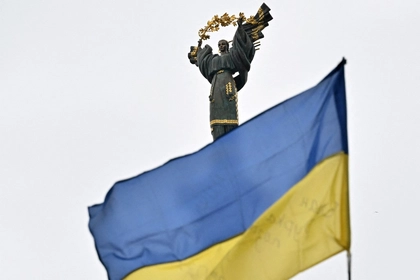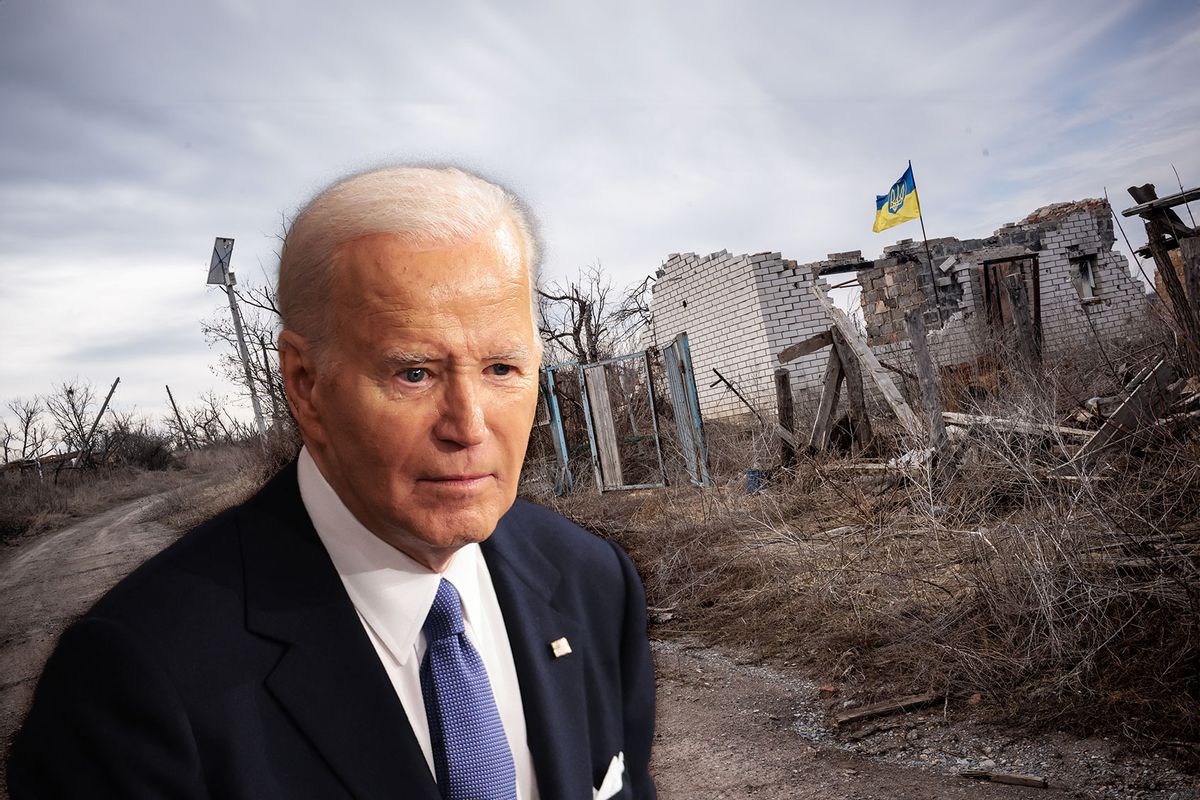Sabrina Haake
March 17, 2024

Rep. Alexandria Ocasio-Cortez (center) arrives at the 2021 Met Gala in New York City wearing a dress reading "TAX THE RICH." (Photo by James Devaney/GC Images)
Over the past 50 years, before the GOP went all in on fascism and isolationism, the most dramatic difference between Democrats and Republicans lurked in the driest of places: tax policies.
Democrats essentially wanted to tax the rich to help the middle class and working poor, while Republicans argued that helping the rich would lift all ships and eventually help everyone.
Trickle-down economists gave the GOP political cover for decades, providing Republican Presidents Reagan, Bush and Trump the plausible justification they needed to pass massive tax cuts for their donor class. Conservative economists-for-hire claimed that gifts to wealthy individuals and corporations would drive economic investment. Tax breaks for top-bracket earners, they argued, would result in the creation of more jobs, higher average wages, and an overall upturn in national economic indicators.
But decades of Republicans’ welfare-for-the-wealthy have finally delivered enough data to put trickle-down where it belongs: in the political scam column.
And Democrats need to fiercely own that fact during their campaigns for Congress and the White House.
Research debunks trickle-down as a scam
Economic indicators reveal that helping the rich helps only the rich.
As National Economic Council Director Lael Brainard told the Economic Club of New York last year, although tax cuts for the wealthy added trillions to the national debt, the cuts didn’t deliver measurable gains in jobs, they didn’t cause an increase in wages earned by the average worker and they didn’t — despite a promise of more “capital to build factories, to buy equipment, and hire more people” — lead to any increase in investment whatsoever.
ALSO READ: Is Alexandria Ocasio-Cortez’s ‘Squad’ dying?
Instead of delivering these — or any — economic benefits to the middle and lower classes, tax gifts to the rich caused economic inequality to increase, as many communities suffered from stagnated investments in infrastructure and sustained disinvestment.
For the first four years following Trump's 2018 corporate tax cuts, the largest corporations spent their savings to enrich themselves and their shareholders through stock buybacks. Instead of investing the money in plants, employees or equipment to increase production, they spent the tax windfall on themselves.
Reduced tax income from the top, which increased the national debt, also led to higher interest rates overall, increasing the costs of day to day necessities. In result, while top earners retained even more disposable earnings, income for other Americans failed to keep pace with rising costs of living.
A con job
The U.S. economy is not alone in debunking the GOP’s trickle-down con job.
A joint paper by the London School of Economics and King’s College of London tracked data from 18 developed countries over a 50-year period. Researchers compared economic data from countries that passed tax cuts for the rich in a specific year with countries that did not pass tax cuts for the rich that same year, between 1965 to 2015.
The conclusion? “Per capita gross domestic product and unemployment rates were nearly identical after five years in countries that slashed taxes on the rich and in those that didn’t.”
Forbes reported the same thing about Trump’s 2017 tax cuts for the wealthy. Noting that “Trump tax cuts helped billionaires pay less taxes than the working class in 2018,” Forbes reported that for “the first time in American history, the 400 wealthiest people paid a lower tax rate than any other group,” citing economists Emmanuel Saez and Gabriel Zucman’s book, The Triumph Of Injustice: How the rich dodge taxes and how to make them pay.
In 2022, after President Joe Biden had been in office for nearly two years, income inequality finally declined for the first time since 2007. But the disparity remains striking: 10 percent of households in 2022 had income above $216,000 (a 5.5 percent reduction from the 2021 estimate of $228,600), while 10 percent of households had income at or below $17,100.
Biden’s budget vs. Trump’s tax giveaway to the rich
Seeking to reduce such aggressive imbalances, which lead to other costs which increase other taxes, the Biden administration last week released its proposed budget for the upcoming fiscal year.
Biden’s plan requires wealthy and high earners to contribute more in taxes (cue the massive dark money contributions to Trump), while keeping Biden’s promise not to raise taxes on anyone who makes less than $400,000 a year.
Biden’s proposed budget also reigns in national debt after Republicans added an unprecedented $8 trillion to the nation’s debt under Trump. In 2017, Republicans reduced the top corporate tax rate from 35 percent to 21 percent, gifting corporations — strong political donors — with a 40 percent reduction in their tax burden, largesse that did not trickle down.

President Joe Biden talks about his proposed FY2024 federal budget during an event at the Finishing Trades Institute on March 9, 2023, in Philadelphia.
As former Republican Rep. David Jolly of Florida observed, a quarter of the nation’s total debt was incurred under Trump alone: “Roughly 25 percent of our total national debt incurred over the last 230 years actually occurred during the four years of the Trump administration.”
Following Trump’s colossal $2.3 trillion tax giveaway to corporations and the nation’s wealthy, Trump reminded his rich donor friends, “You all just got a lot richer.”
Did they ever.
The nonpartisan Congressional Budget Office calculated that, over the next 11 years, Republicans’ 2017 tax cuts would increase the national debt by another $1.9 trillion. As Trump so sagaciously observed, “This is the United States government … you never have to default because you print the money.”
Biden’s proposed budget
Fast forward to when there’s an adult in the room.
Under Biden’s plan, wealthy individuals and corporations would pay more in taxes — partially rescinding Trump’s gifts to the rich — which would pay for tax credits to the working poor and middle class. Economists project that Biden’s plan will cut $3.3 trillion from the deficit over 10 years as it lifts families with children out of poverty and cuts annual taxes by an average of $2,600 for low to middle income families.
According to Biden’s fact sheet, the plan would also close the windfall for high wage earners who stop paying Social Security payroll taxes after they’ve earned $168,000 in income, which, for the highest earners, happens in the month of January alone, leaving the rest of their annual earnings free of Social Security taxes.
Biden’s proposed budget would also help young people become first-time home buyers after the Supreme Court overturned Biden’s student debt forgiveness that would have benefitted the same group. It calls for an annual $5,000 tax credit a year for two years, effectively reducing the mortgage rate by more than 1.5 percentage points for those two years. Biden’s plan also encourages people to move out of starter homes and put them on the market, and commits to build and preserve 2 million homes.
Biden also tackles rising rents by subsidizing new construction and renovation and seeks to “curb unfair and illegal pricing across the economy” to “combat egregious rent increases and other practices driving up rents.” David Dworkin, president and chief executive officer of the National Housing Conference, told the Washington Post that Biden’s plan, as revealed in his State of the Union address, was “the most consequential set of housing recommendations in a State of a Union in over 50 years...”
Democrats need to recognize Biden’s seeds of success
When they review Biden’s proposed budget, Republicans will howl about redistributive wealth and pennies to welfare recipients, without acknowledging their $2 trillion tax giveaway to their uber-wealthy donors.
Democrats — during this election year when the White House, U.S. House and U.S. Senate are all in play— should counter the gaslighting with economic fact.
Bidenomics are working, but lasting effects will take time. When compared to other G7 industrial economies post-COVID, the U.S. economy recovered faster and with lower inflation — a credit to both the Federal Reserve and the Biden administration’s investment in key industries. In less than a year, the Inflation Reduction Act prompted massive investment in a manufacturing and transportation buildout across the states.
As Biden predicted, private investment and hiring did, indeed, follow public investment. This stands in stark contrast to the previous administration’s gifts to the rich. The U.S. Treasury department reported that more than 10½ million businesses started up in 2021 and 2022, leading to the creation of 3 million new jobs, as a direct result of federal investments under the pandemic-era American Rescue Plan.
Since Biden took office, companies have announced over $500 billion in investments in the United States, including over $200 billion in semiconductor and electronics manufacturing and nearly $225 billion in clean energy, electric vehicle, and battery investments. Overall, according to the U.S. Treasury Department, spending on manufacturing construction has nearly doubled since the end of 2021.
Although Biden’s budget faces significant pushback from donor-protective Republicans, years of disinvestment from the GOP’s trickle down scam are finally over. Manufacturing trends are demonstrably, undeniably and remarkably moving up.
Democrats can do themselves- and the nation- a favor by owning this success and selling it to a public that sometimes forgets, even as they begin to reap the benefits.
Sabrina Haake is a columnist and 25 year litigator specializing in 1st and 14th Amendment defense. Follow her on Substack.






